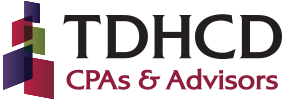
If your business has significant inventory on its balance sheet, it can be costly. The carrying costs of inventory include warehousing, salaries, insurance, taxes, and transportation, as well as depreciation and shrinkage. Plus, tying up working capital in inventory detracts from other strategic investment opportunities.
Reducing these costs can help improve a company’s profits and boost operating cash flow. Here are two alternative inventory management systems to consider.
1. JIT method
Just-in-time (JIT) inventory management involves planning shipments of raw materials to arrive just before they’re required. This saves money in inventory costs by reducing the amount of inventory on hand. It also increases production responsiveness and flexibility. Elements of JIT management include:
Smaller lot sizes. This allows your company to be more flexible and meet changes in market demand. It can also decrease inventory cycle time, lead times and pipeline inventory. Because lot sizes are smaller, companies that use the JIT method can achieve a consistent workload on the production system.
Tighter set-up times. By reducing set-up times and the associated costs, you can afford to produce smaller lot sizes. Also, if your company is inefficient on machine setups, you’ll likely change products less often.
Flexibility. A flexible workforce can quickly reassign tasks during bottlenecks or unplanned spikes in demand.
Close supplier relationships. Suppliers must provide frequent, on-time deliveries of high-quality materials. So, close ties with them are vital to the JIT system. Long-term relationships with suppliers promote loyalty and improved overall quality.
Regular maintenance schedules. For companies with a high degree of automation, preventive maintenance is critical. Unplanned downtime can be disruptive and costly.
Quality control. JIT systems are designed to control quality at the source, rather than later in the process. For that reason, production workers are responsible for their own work, and if a defective unit is discovered, it’s returned to the area where the defect occurred. This makes employees accountable and empowers them to produce higher-quality products.
2. Accurate response method
Accurate response inventory management systems focus on forecasting, planning and production. The underlying premise of accurate response focuses on flexible processes and shorter cycle times to better match supply with demand. By speeding up the supply chain process, management can delay decisions regarding raw materials, obtain more market information and better determine production requirements.
This inventory management method incorporates the following key elements:
Overall performance. Accurate response measures the cost per unit of stockouts and markdowns. Then it factors this information into the overall evaluation of the company’s performance. Let’s say your company can’t meet demand. The lost sales would be factored into the overall costs, which would then justify increasing production to obtain and maintain customers.
Predictable and unpredictable products. Predictable products can be made further in advance to “reserve” capacity during the selling season for unpredictable products. Then your company won’t have to accumulate and pay for large inventories.
For more information
Incorporating JIT and accurate response techniques can dramatically improve your company’s efficiency. Lowering inventory levels cuts operating capital needs and gives you a competitive edge. Reducing the expenditures for warehouses, employees and equipment produces a stronger balance sheet and income statement and improves cash flow. Contact us discuss whether it makes sense to implement these systems at your business.
© 2024
